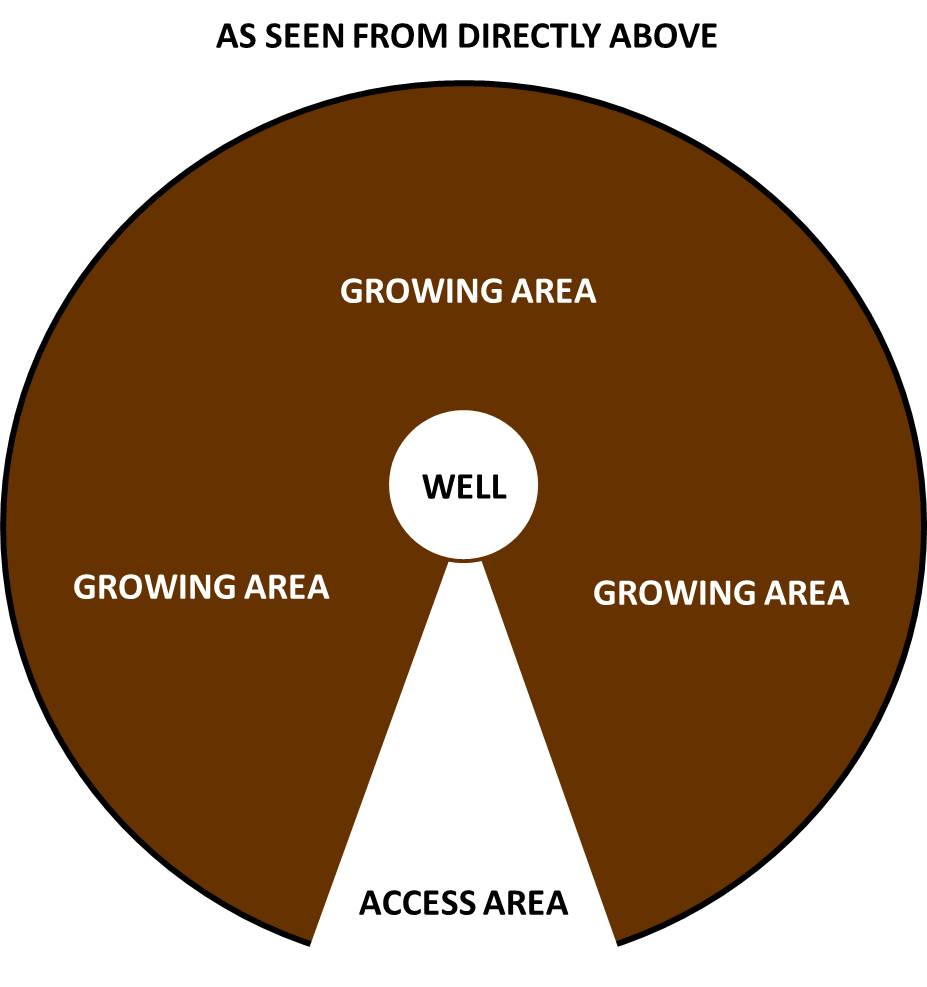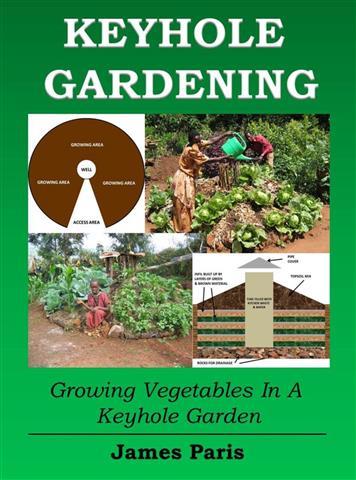The main purpose of a Keyhole garden is to create a growing environment to grow vegetables where the soil or other conditions would otherwise make the task difficult.
This is particularly the case throughout the African continent where weather and temperature can make the growing of vegetables difficult in the extreme. However now that the idea has taken off so to speak, Keyhole gardens are to be found throughout the Americas and Europe as the advantage to growing veggies in this way become apparent.
What is a Keyhole Garden?
A keyhole garden is another type or form of Raised Bed Garden, with many of the same advantages or attributes. It is built in such a way so that looking down directly on the structure it forms the shape of a keyhole – hence the name!

In common with other no-dig gardening methods, Keyhole Gardening shares many advantages over conventional methods, including the following…
methods, Keyhole Gardening shares many advantages over conventional methods, including the following…
Reasons for a keyhole garden:
- Easier to grow vegetables even in areas with poor soil and adverse weather conditions
- Cheap to build and simple to operate & maintain
- No expensive compost needed to grow vegetables
- A great way to recycle kitchen waste and other organic matter
- Easier to protect crops from predation by animals than a traditional garden
7 Benefits Of Keyhole Gardening
1. Overcoming Adversity: As mentioned, this method can be used whatever your ground conditions. Poor soil quality or stones and rocks simply do not matter when using this technique.
Even if you are in an area prone to flooding, or even the opposite – extreme drought, the Keyhole Garden will still ‘produce the goods.’
2. Abundant Crops: Owing to the nutrient-rich soil composition, and the on-going nature of the feeding program; you are assured of great healthy food crops.
3. Easy Maintenance: The design of this garden means that everything is within arm’s reach, with little bending and no heavy digging involved. This means that more time can be spent tending your plants, rather than laboriously digging out weeds with a heavy spade or garden fork.
This is particularly so if you use the special infill method described, rather than using wee-seed contaminated garden soil (more on this in later chapters).
4. Longer Growing Season: Similar to Raised Bed gardening, a Keyhole Garden bed is raised from the ground, thereby somewhat insulated against the cold. This means that it warms up quicker in the Spring, and takes longer to succumb to the cold later on in the season.
5. Best Use of Space: A huge variety of crops can be grown in a small area – 3 metre diameter (9 foot ten inches). This is owing to the fact that the nutrient-rich soil can stand crops being planted much closer together than you would in a traditional row garden.
Also the fact that you are not wasting space on pathways between rows of vegetables, means that every square inch of your Keyhole Garden is available for planting.
6. A Critter Free Area! Put simply, the raised effect of the garden means that it is much easier to keep at bay destructive pests of the four-legged variety! Even flying pests such as birds, butterflies or even locusts and grasshoppers, can be kept out with some simple modifications to the arrangement (more on this in later chapters).
such as birds, butterflies or even locusts and grasshoppers, can be kept out with some simple modifications to the arrangement (more on this in later chapters).
7. Perfect for uneven surfaces: Maybe your garden area is a little too steep to consider growing vegetables? No problem. A keyhole Garden can be easily constructed so that the actual growing area is level and easy to operate.
This is similar to the terracing designs that have been used for centuries by many civilizations, hindered by a lack of level growing space.
These are just some of the many advantages over traditional ‘row’ gardening practices and hopefully answers some of the questions you may have on some of advantages of no-dig gardening that the Keyhole method enjoys.
you may have on some of advantages of no-dig gardening that the Keyhole method enjoys.
How Does A Keyhole Garden Work
A keyhole garden works on the principle of making the most of a small area and using the free organic waste that surrounds most of us in out daily lives, in order to grow vegetable crops.
A round structure is built with an access point cut into the center where the user can service the growing area, and feed the center well with organic matter. This decomposes to feed the whole growing area enabling a variety of vegetables to be grown even in hot dry climates and poor soil conditions.

